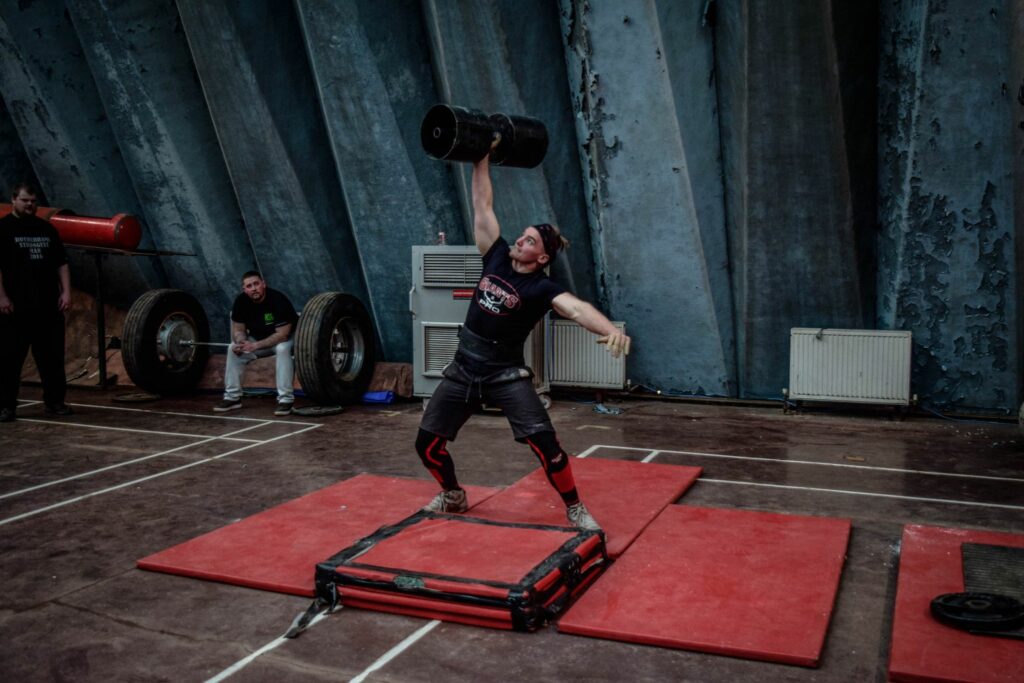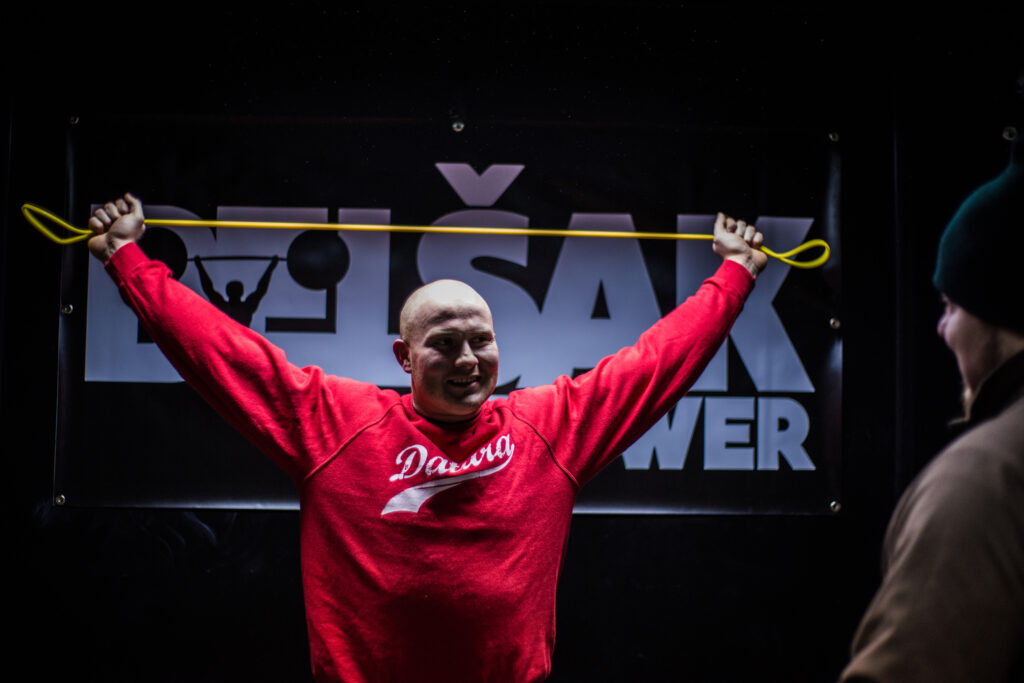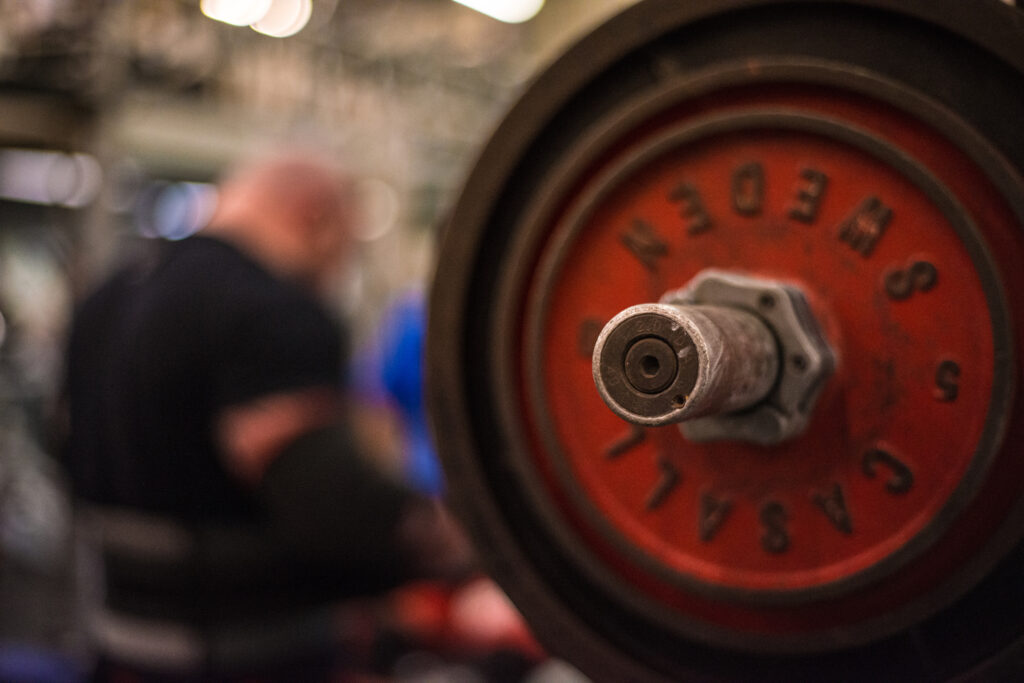Strongman is a tough sport, and the dropout rate reflects that. It’s such a shame to see a talented athlete fall to the wayside either through injury or losing interest after a bad comp. But it doesn’t have to be that way. Start on the right foot and keep those good habits up, and you can look forward to not only a successful run but a sport for life. The following ten steps are a collection of the best pieces of advice I’ve heard. Some of them are mine, some are not, but all of them though will ensure that you get the best possible start.
1. Surround yourself with Strongmen.
Strongman is a solitary sport. It doesn’t matter how many friends come to watch you’ll be up on that platform alone. Your team can cheer from the sidelines cheering but even the yells of the most fervent fans can’t make that bar move. Training on the other hand is a team activity, physically you need bodies to get equipment out, load plates, spot you, film your sets, etc. But more important than that is the knowledge and experience that these people can bring. They will become your support network, answering questions only a strongman would know like how to heat up tacky at a comp. If you have a good training crew they will also be brutally honest with you, letting you know that squat wasn’t deep enough or that last yoke run was lazy. You can do it on your own but it’s a lot harder and a lot less fun.
2. Read everything and question all of it.
Pretend you’re an aspiring strongman twenty years ago, and you want to find out where to begin. Your only option would of been to physically track down one of the few people actually competing at the time and beg them to take you under their wing.
Nowadays, however, it’s a lot easier; there are strongmen of all levels competing all around the world, but more than that you can hop on online and read what they have to say.
There are tons of articles on strongman on BarBend alone. This influx of information means that you no longer need to rely on persons testimonial, you can find out what works for you.
Your interests might be exclusively strongman, but don’t limit yourself. Read everything you come across regardless of discipline. Struggling with fitness on the longer events, look into how a crossfit athlete trains. Being held back by the pick up on the yoke, see what a powerlifter has to say about building leg strength. The same goes for cleans and olympic lifters, mobility, and gymnasts and a whole host more.
All this information comes at a cost though. Some of it is nothing, but drivel is equal. For every article full of gold, there will be another three full of a less shiny matter. The only way to tell the difference is to read the lot, try bits and ask people you trust (refer to point one), soon your bullshit meter will be as strong as your lifts.
3. Train with as many people as you can, but don’t flit between gyms.
Strongman is still in that wonderful phase where you can feasibly reach out to an athlete several leagues above you and ask if you can join them for a session. Some will welcome you with open arms, some will charge you and of course some just won’t reply. Make the most of this opportunity but remember where your base is, training at a different gym every session might give you great insights but it will be tough to stick to a program.
The best option is to train throughout the week at one gym and then if time allows drive to another gym for events on the weekend. Of course, you can go to one of the many seminars that are being running all over the strongman world.
4. Build slowly.
Don’t miss lifts in training. Especially on squats and deadlifts, nothing good can come of it and the chance of injury and losing motivation are just too high. I appreciate this advice is easy to give and harder to abide by. I’d be lying if I said I wasn’t guilty of failing in training, especially when I first started lifting, but the slight ego boost of a victory is never worth the pain of failure.
If in doubt follow the immortal words of Benni Magnusson:
“I prefer to go into competition not knowing how strong I am, rather than how weak I am”.
5. Keep it simple.
Beginner gains are magical. You can do literally anything and still see results. Make the most of these newbie gains by sticking to a good program and not getting distracted, because it doesn’t last. Distractions include, using bands/chains, too many variations, supramaximal work, crazy supplementation, partial range of motion and increased range of motion. They all have their place but avoid them until you need them, which will soon enough. While your numbers are still going up regularly, stick to the basics and save the complicated stuff for later.
6. Get the basic supports.
As with the above point, in the early days you don’t need to get carried away with supports. Personally I believe that at least your first month or two, are better spent with no supports at all unless a past injury dictates otherwise. After that a good leather belt, knee sleeves, chalk and a pair of flat trainers are all you need to get going. As you develop start looking into more specialized kit, knee wraps, stones sleeves, squat shoes, soft belts, etc. The last thing you want to do is go to your first comp looking like you robbed an SBD depot.

7. Stay Motivated
Typically new strongmen and strongwomen find their motivation slipping at one of two crucial points. For some it’s three days after a particularly brutal events session and they still can’t move. For the others it’s the boredom of a skill or deload phase. Don’t despair or give up if you find yourself in one of these lulls, instead be proactive. If your body is hurting go to the gym, foam roll and help load plates for your training partners. Chances are that you’ll find yourself joining in just at a lower intensity. If you’re on a deload, try throwing in some light conditioning work with an implement you enjoy.
If all else fails an evening of watching old World’s Strongest Man shows on youtube or the Eddie Documentary on Netflix will perk up even the most ailing of hearts.
8. Stay Supple.
Watching some of the older athletes move around can be painful. Years of putting their bodies through hell when mobility has a cursory afterthought at most. Don’t make the same mistake, start moving right at the very beginning. Find a good coach or training partners who will teach you the right movement patterns on the platform, leaving you with just the mobility and prehab work to worry about.
And don’t be afraid of sports massages, they will really help.
9. Don’t get fat for no reason.
Once upon a time, if you wanted to be a competitive strongman, you had to be tipping the scales over a 120kgs at least. Nowadays though, there are weight categories from 80kg upwards for men and I believe as low as 53kg for women in some divisions. With all this choice there is absolutely no reason for someone weighing 70kg to try and bulk up to compete with the big boys in their first year of training. If that’s a route you want to go down later, you will have the experience to know how to do it well in time.
The other side of the coin is already large beginners, who convince themselves they need to eat multiple gargantuan meals a day to fuel recovery. As mentioned earlier when you first start training you will get stronger regardless of what you do. Eat as much as you need to but don’t do anything extreme until you have the numbers and knowledge to back it up.
10. Compete.
This one is simple. If you don’t compete you’re not a strongman. The competition doesn’t matter, don’t worry if you come last or the weights are a bit too heavy or you haven’t been able to train some of the events. Go have fun and see if this is the sport for you.
Editors note: This article is an op-ed. The views expressed herein are the authors and don’t necessarily reflect the views of BarBend. Claims, assertions, opinions, and quotes have been sourced exclusively by the author.

